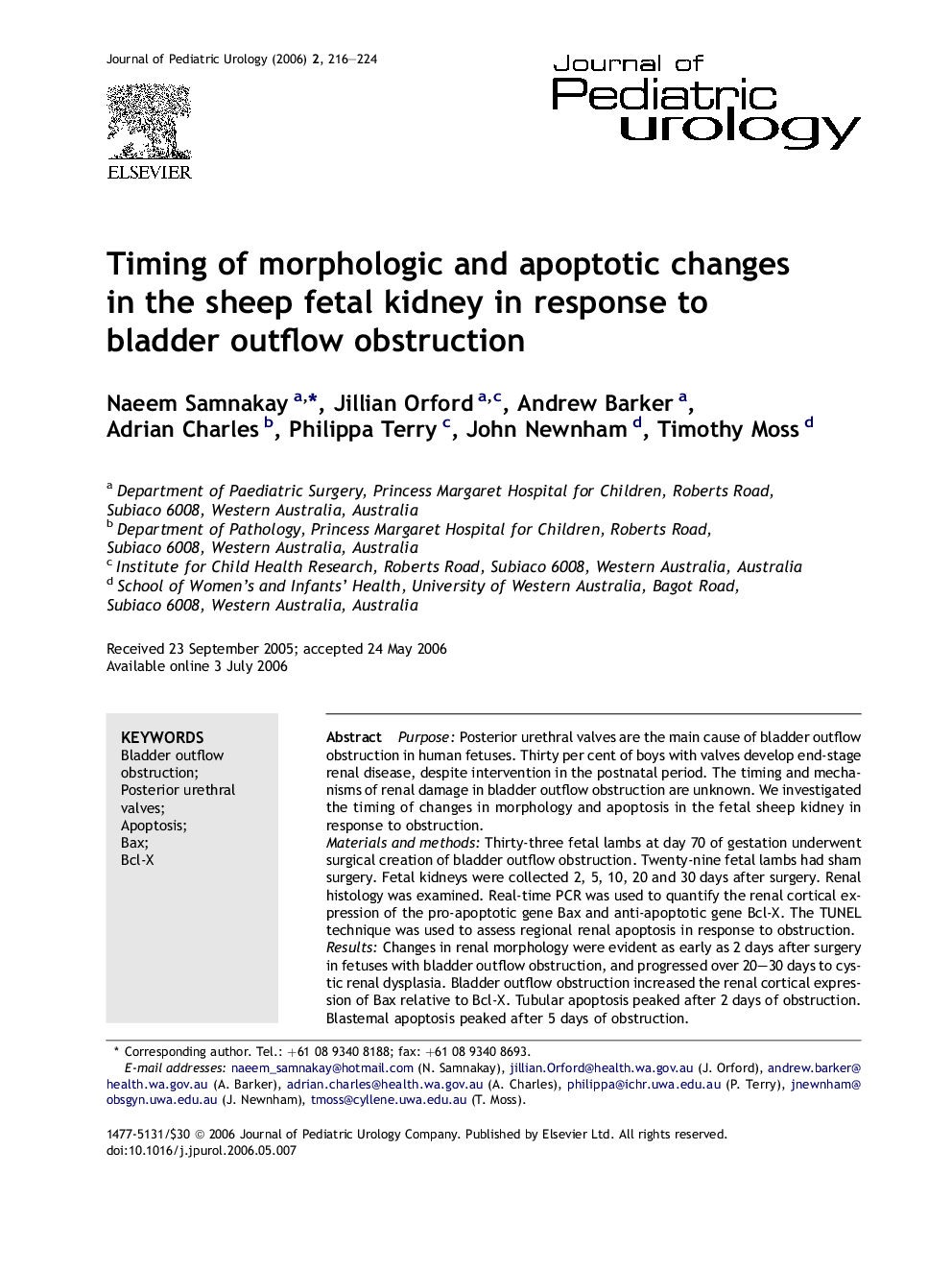| Article ID | Journal | Published Year | Pages | File Type |
|---|---|---|---|---|
| 4163985 | Journal of Pediatric Urology | 2006 | 9 Pages |
PurposePosterior urethral valves are the main cause of bladder outflow obstruction in human fetuses. Thirty per cent of boys with valves develop end-stage renal disease, despite intervention in the postnatal period. The timing and mechanisms of renal damage in bladder outflow obstruction are unknown. We investigated the timing of changes in morphology and apoptosis in the fetal sheep kidney in response to obstruction.Materials and methodsThirty-three fetal lambs at day 70 of gestation underwent surgical creation of bladder outflow obstruction. Twenty-nine fetal lambs had sham surgery. Fetal kidneys were collected 2, 5, 10, 20 and 30 days after surgery. Renal histology was examined. Real-time PCR was used to quantify the renal cortical expression of the pro-apoptotic gene Bax and anti-apoptotic gene Bcl-X. The TUNEL technique was used to assess regional renal apoptosis in response to obstruction.ResultsChanges in renal morphology were evident as early as 2 days after surgery in fetuses with bladder outflow obstruction, and progressed over 20–30 days to cystic renal dysplasia. Bladder outflow obstruction increased the renal cortical expression of Bax relative to Bcl-X. Tubular apoptosis peaked after 2 days of obstruction. Blastemal apoptosis peaked after 5 days of obstruction.ConclusionsChanges in pro- and anti-apoptotic gene expression in the fetal renal cortex, and alterations in the number of apoptotic cells and renal morphology are evident soon after the onset of bladder outflow obstruction. These findings suggest that damage to the developing fetal kidney begins to occur at the onset of obstruction. Attempts to preserve renal function by antenatal interventions may best be achieved by early treatment.
